Monument with outstretched arms. Statue of Christ the Redeemer: history and where it is located.
The huge statue of Christ the Redeemer, towering over Rio de Janeiro, has become a symbol of Brazil, and was also recognized as one of the new Wonders of the World in 2007. The majestic sculpture is truly impressive, and its location plays a significant role in this - the huge structure is located on the top of Mount Corcovado, which reaches 700 meters in height.
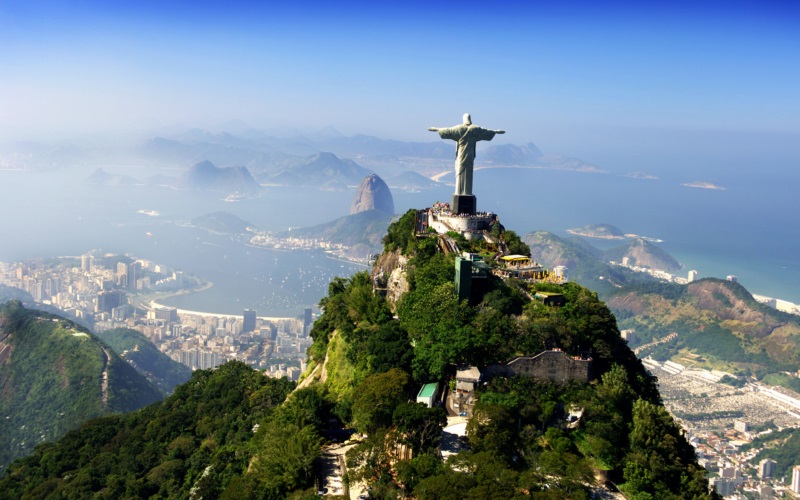
About two million people climb to the statue of Christ the Redeemer every year. Everyone is transported to the top by an electric train, which takes about a third of an hour on the way. In addition, you can climb to the statue by road or on foot.
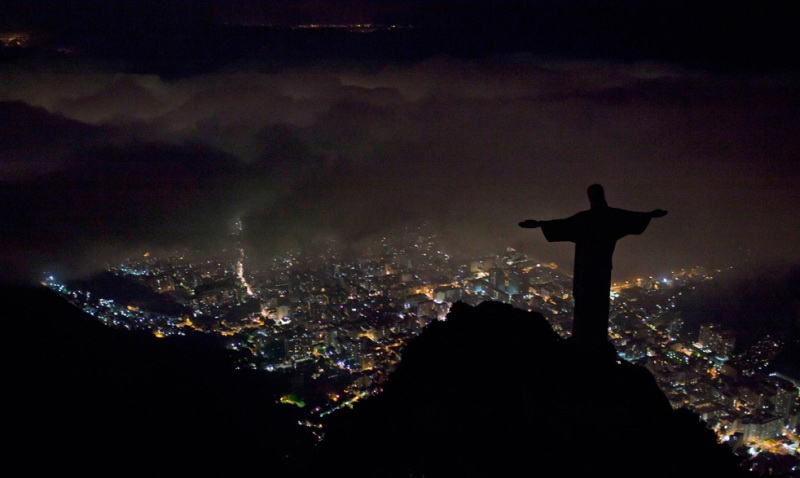
It is customary among tourists to take pictures in front of the statue “for good luck.” It is noteworthy that this is the largest statue of Jesus Christ on our planet, as well as one of the most recognizable sculptures on the globe. From the top of Mount Corcovado there is a beautiful view of Rio de Janeiro, its surroundings and the bay.
Parameters of the statue of Christ the Redeemer

To understand how impressive the dimensions of this monument are, just think about these figures: the height of the figure of Christ the Redeemer is 38 meters, its weight is 1145 tons, the head reaches 3.75 meters in height, the arms are open 30 meters wide.
History of the statue
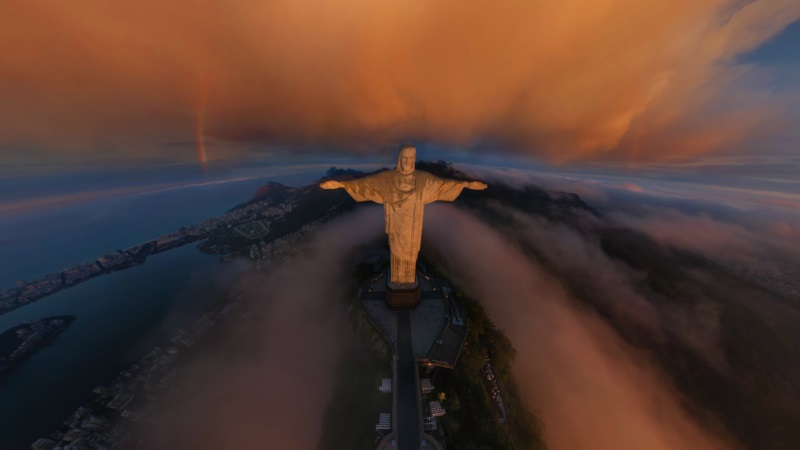
Where did the idea come from to build such a majestic symbol of Brazilian Christianity in this place? This sculpture has a very long history. Back in 1859, Catholic priest Pedro Maria Boss had his eye on the top of Corcovado. The mountain and the panorama opening from its top impressed the clergyman, and it was he who proposed erecting a monument to Christ here. But this required a lot of money, which could not be allocated.

Already in the 20th century, Catholic organizations were again inspired by this idea; they organized a collection of signatures and funds to bring the bold project to life. A miracle happened - a simply huge amount, by the standards of that time, was collected. After this, the city administration decided to hold a competition for the best project; a lot of options were presented.
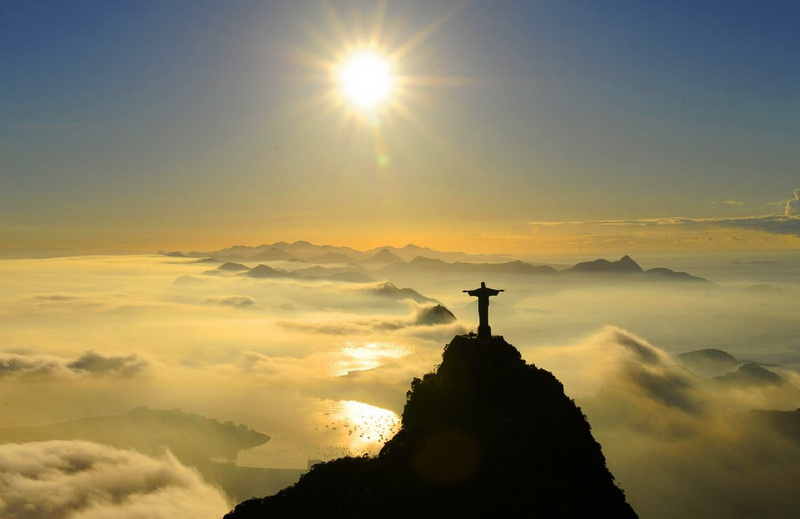
The project of engineer Heitor da Silva Costa was recognized as the best project. His idea was to create a huge statue with arms spread apart - this pose resembled a cross, and the pedestal was supposed to symbolize the globe. The statue was meant to convey a message that was easy to understand: “All things are in the hands of God.” However, later the project was finalized by artist Carlos Oswald, and it was decided to abandon the ball.

It took nine years to build the current symbol of Brazil. Parts of the statue and its frame were made in France; unfortunately, the Brazilians were unable to carry out such work. It was not so easy to transport the workpieces to another hemisphere and then lift it to the top of the mountain, but everything went well. And in 1931, on October 12, the monument was finally opened. Rio de Janeiro celebrates this date every year.
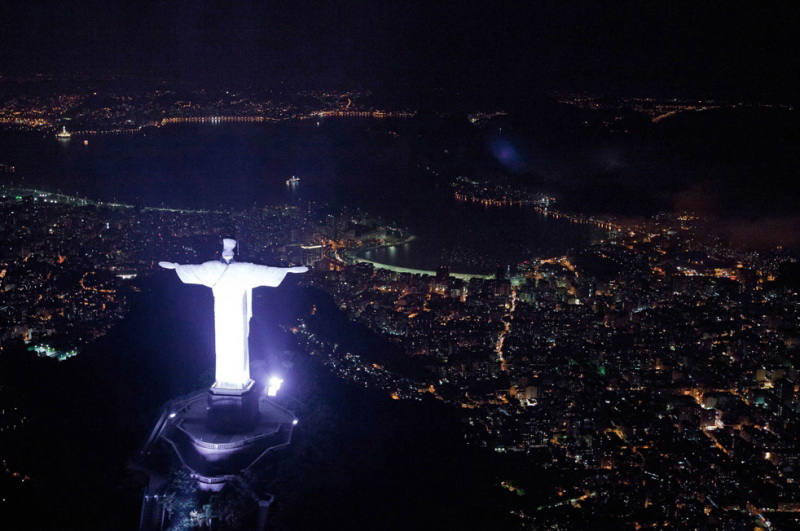
During its history, the statue of Christ the Redeemer was restored twice. In 2010, a cosmetic restoration was carried out, which was an emergency measure - someone wrote on the statue, and the text was very strange, for example: “The cat is out of the house - the mice are dancing.” To this day it is unknown what goals were pursued by the people who encroached on the monument.

Particular attention is paid to night illumination: at night, the statue of Christ the Redeemer is very beautifully illuminated. The illumination system has also been restored more than once.
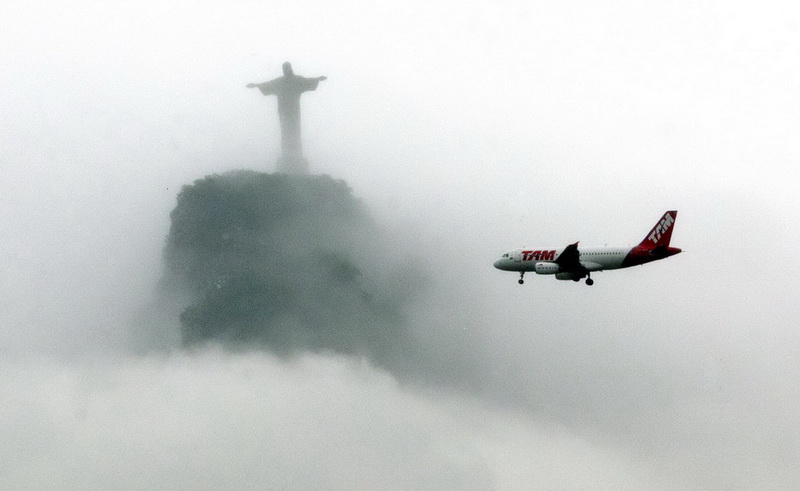
The statue of Christ the Redeemer is a real architectural masterpiece; if you happen to visit Rio de Janeiro, don’t miss the opportunity to see it up close. Moreover, from the top of Mount Corcovado you will see a panorama of extraordinary beauty. It is unlikely that you can see something like this anywhere else on our planet.
And in this video you can admire the beauty of Rio de Janeiro at night and the statue of Christ from a bird's eye view:
From an unprecedented height. The statue spread its arms wide, as if hugging and protecting the city. Today this monument is perhaps the main attraction.
History of the statue of Jesus Christ in Rio de Janeiro
Rio de Janeiro is beautiful. Founded in 1502, the city has been a capital of beauty and a center of tourism for 4 centuries. “God created the world in six days, and on the seventh day he created Rio de Janeiro” - this is how Brazilians lovingly say about their fabulously beautiful city.
It is believed that the most cheerful people live here. Until 1960, Rio was the capital. The city is surrounded by a semi-ring of mountains rising from the azure depths of the bay, and on the sea side it seems to be bordered by a white edge of sandy beaches.
In 1922, during the celebration of the centenary of Brazilian independence, it was decided to build a statue that would become the main attraction of the country. A month later, a competition of projects for the best monument - a symbol of the nation - was announced in Brazil's leading weekly. The jury unanimously approved the project of Hector da Silva Costa, who proposed installing a statue of Christ hugging the city, as if protecting it from troubles and misfortunes. The Catholic Church fully supported the new project and even began collecting donations for the installation of the statue. As a result, nine years later the statue already stood in its designated place.
The monument was designed and manufactured in Paris. The design of the monument had to be as strong as possible, because, standing at the very top, the statue would be exposed to strong and torrential rains.
The sculpture was modeled by the French sculptor Paul Landovsky. In parallel, engineers led by Heitor Silva Costa and Pedro Vianu developed the frame.
The finished statue was transported from Paris to Rio de Janeiro and installed on Corcovado Hill. On October 12, 1931, its grand opening took place. In 1965, Pope Paul VI repeated the consecration ceremony. Another great celebration took place here in the presence of Pope John Paul II on October 12, 1981, when the fiftieth anniversary of the monument was celebrated.

Features of the statue of Jesus Christ in Rio de Janeiro
The statue of the Savior (Cristo Redentor) is rightfully considered the symbol of Rio. It stands on the top of the Corcovado hill (“Corcovado” translated from Portuguese as “hump”; the name quite aptly characterizes the shape of the hill) at an altitude of 704 meters. The sight of the stone Savior, with his arms outstretched, as if embracing the entire city, is undoubtedly impressive.
The monument attracts a large number of tourists. Built in 1885, the tram line now leads almost to the top of the hill: the final stop is just forty meters below the statue. From there you need to climb 220 steps of a staircase to the pedestal on which the observation deck is located. There are also ski lifts at the disposal of visitors.
Rumors that the monument is visible from anywhere in Rio de Janeiro are, of course, greatly exaggerated. Even if you come close to the mountain, the statue will appear as a small figure against the sky. However, its size is impressive. The height of the statue is 30 meters, not counting the seven-meter pedestal; the head of the statue weighs 35.6 tons, the hands weigh 9.1 tons each, and the arm span is 23 meters.
The most famous and majestic statue in Rio de Janeiro - the figure of Christ the Redeemer, which adorns the top of the South American mountain Corcovado.
This is Brazil's largest statue of Christ: he spreads his arms over the bustling metropolis in a gesture of blessing. The building has long attracted tourists from all over the world - tours to Corcovado are popular due to visits to observation decks, as well as beautiful views of the city of ten million, cozy bays and coves, clubs and Ipanema beach, and the grandiose famous Maracana Stadium. The monument was erected in the center of Tijuca National Park.
Christ statue in Rio: history
In 1921, the country was preparing to celebrate the approaching centenary of Brazilian independence. By this date, it was decided to build a monument to Christ the Redeemer on Corcovado. The city authorities announced a competition for the best design of the monument, and fundraising began immediately.

- More than 2.2 million reais were raised for the construction of a statue of Christ in Brazil. The Catholic Church was actively involved in financing the project. The city's Archbishop Sebastian Leme supervised the construction of the architectural masterpiece.
- The initial version of the monument was a sketch by the talented artist Carlos Oswald, who proposed to depict the Savior with his hands open in a blessing gesture. The statue in Brazil would become a unique symbol of the Christian faith and would look like a huge cross. They planned to install the reinforced concrete Jesus on a pedestal made in the shape of a globe. Brazilian engineer da Silva Costa developed the final design for the national monument.
- During construction, soapstone was used, thanks to which the statue was well strengthened, giving its surface a special aesthetics.
- The country's technologies did not provide for the presence of workshops of such a scale, so to implement the project, it was decided to create the masterpiece in parts in France. In the mid-20s, the French sculptor Landowski modeled the head of the future statue, which was about 4 meters high. Next we started making the hands. Gradually, all the parts were made of hard and pliable stone, but they needed careful transportation to the mountain.
- The statue in Rio de Janeiro was delivered to Brazil in disassembled form and lifted up along a small railway built specifically for this purpose. The Karakol path was laid from the tracks - workers raised the parts of the monument up 220 steps.
- It took nine years to build this grandiose statue in Rio de Janeiro. The finished height of the structure was 38 meters, of which more than 30 meters are devoted directly to the figure of Christ. The statue weighs 635 tons, while the span of its arms reached 28 meters. It was decided to install Jesus on a picturesque natural hill 700 meters high.
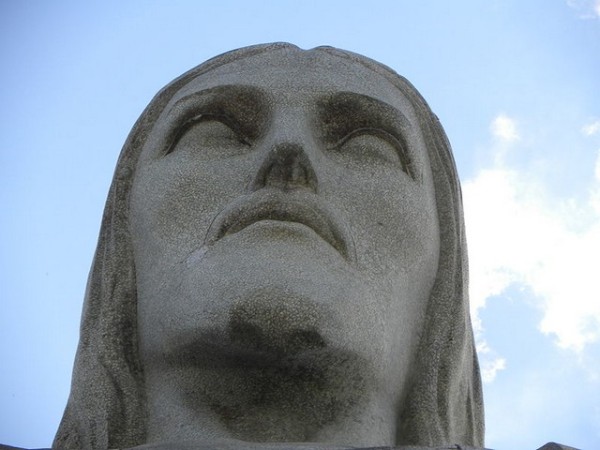
On a solemn date in October 1931, authorities and citizens opened and consecrated this new symbol of Rio.

Design Features
The most beautiful statue in Brazil, due to its majestic size and favorable landscape, is clearly visible even at a great distance. You can admire the real splendor in the evening - the statue is illuminated by a whole system of huge spotlights.
Inside this statue of Christ, famous outside of Brazil, a chapel was opened, located in the basement. Now the chapel has become a place of pilgrimage for wedding processions. Tourists eagerly come here, who, in addition to impressions, try to take with them miniature stone models of the statue from the local souvenir shop.
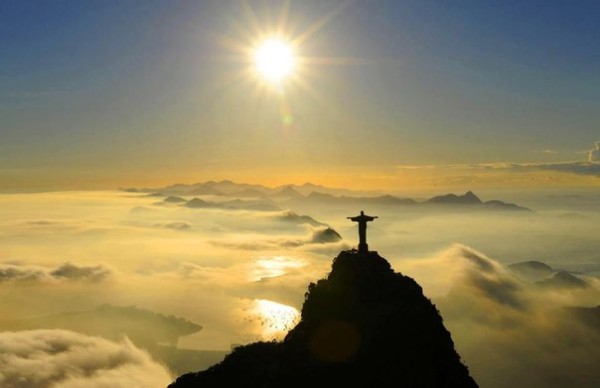
The arms of Christ are wide open in the embrace: the gesture symbolizes sincere and all-forgiving love for people. Locals believe that Jesus hugs everyone who comes to him. In 2007, the statue was elected one of the new wonders of the world.
The observation deck is located at the feet of the statue: you can get there by escalator, road or steps. The site offers magical panoramas of Rio and the surrounding area.
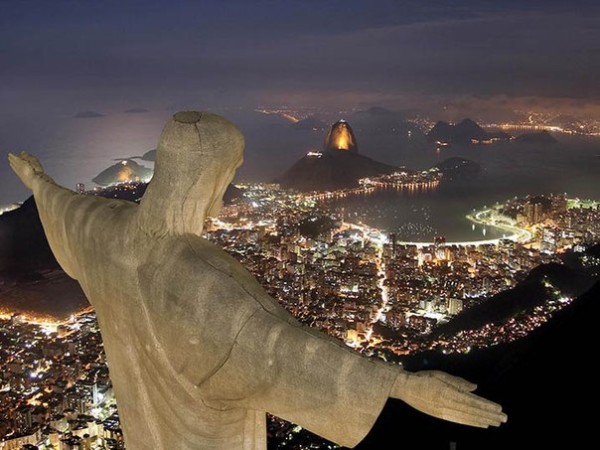
The monument has already undergone preventive and major repairs several times. In 2008, the statue was struck by lightning and was slightly damaged: restoration work lasted two years. The craftsmen managed to renew the outer layer of the stone, repair the fingers and head of the statue, and install new lightning rods. In the same year, the monument was subjected to an unexpected act of vandalism - having climbed the scaffolding left by the workers, the attackers left inscriptions and drawings on the face of Christ.
Every year the statue undergoes mandatory condition monitoring and inspection; work is underway to prevent corrosion and improve the protection of the monument.
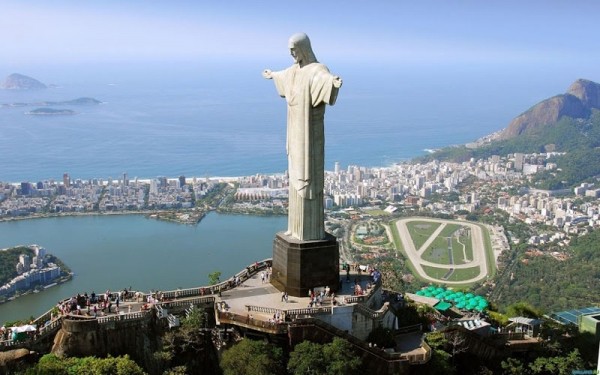
To see this grandiose statue in Brazil with your own eyes, you should go on a trip to the South American continent. Specialists will be able to offer many options for visiting this country on the most reasonable terms and at reasonable prices!
The Statue of Christ the Redeemer (port. Cristo Redentor) is the famous statue of Christ with outstretched arms on the top of Mount Corcovado in Rio de Janeiro. It is a symbol of Rio de Janeiro and Brazil in general. The statue of Christ the Redeemer can rightfully be considered one of the most majestic buildings of mankind. Its size and beauty, combined with the panorama opening from the observation deck at the foot of the statue, will take the breath away of anyone who happens to be there.
It stands on top of the Corcovado hill at an altitude of 704 meters above sea level. The height of the statue itself is 30 meters, not counting the seven-meter pedestal, and its weight is 1140 tons. The idea for this structure originated in 1922, when the centenary of Brazilian independence was celebrated. A well-known weekly magazine then announced a competition of projects for the best monument - a symbol of the nation. The winner, Hector da Silva Costa, came up with the idea of a sculpture of Christ with his arms outstretched and embracing the entire city.

This gesture expresses compassion and at the same time joyful pride. Da Silva's idea was received with enthusiasm by the public also because it crossed out the previous plan to erect a grandiose monument to Christopher Columbus on Mount Pan de Azucar. The church immediately got involved, organizing a fundraiser across the country to finance the project.
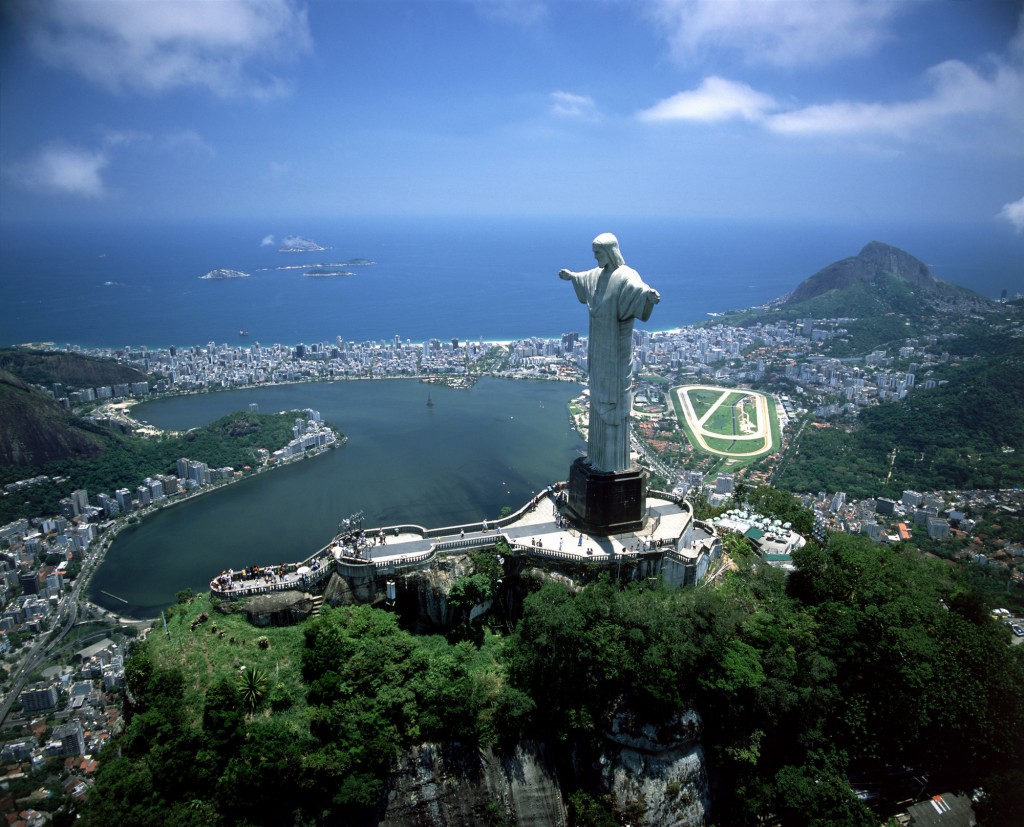
An interesting detail: due to technological imperfections, it was not possible to create such a statue in Brazil at that time. Therefore, it was manufactured in France, and then transported in parts to the site of future installation. First by water to Brazil, then by miniature railway to the top of Mount Corcovado. In total, construction cost the equivalent of 250 thousand US dollars at that time.


Before work began, architects, engineers and sculptors met in Paris to discuss all the technical problems of installing the statue on a hilltop, where it was exposed to all winds and other meteorological influences. Work on the design and creation of the statue took place in Paris. It was then transported to Rio de Janeiro and installed on Corcovado Hill. On October 12, 1931, its first grand opening and consecration took place; by this day, the lighting installation was also installed.

In 1965, Pope Paul VI repeated the consecration ceremony, and the lighting installation was also updated for the occasion. Another great celebration took place here in the presence of Pope John Paul II on October 12, 1981, when the fiftieth anniversary of the statue itself was celebrated.

The statue of Christ the Savior is considered one of the modern wonders of the world. The height of the stone monument is 30 meters, not counting the seven-meter pedestal; the head of the statue weighs 35.6 tons; the hands weigh 9.1 tons each, and the arm span is 23 meters. Built in 1885, the tram line now leads almost to the top of the hill: the final stop is just forty meters below the statue. From there you need to climb 220 steps of a staircase to the pedestal on which the observation deck is located.
In 2003, an escalator was opened that takes you to the foot of the famous statue. From here you can clearly see the beaches of Copacabana and Ipanema stretching on the right hand, and on the left the giant bowl of the Maracana, the world's largest stadium, and the international airport. From the sea side rises the unique silhouette of Mount Pan di Azucar. The statue of Christ the Redeemer is a national treasure and a national Brazilian shrine.


The statue of Christ the Savior is made of reinforced concrete and soapstone, and weighs 635 tons. Due to its size and location, the statue is clearly visible from a fairly large distance. And in certain lighting, it looks truly divine.

But even more impressive is the view of Rio de Janeiro from the observation deck located at the foot of the statue. You can get to it by the highway, and then by steps and escalators.
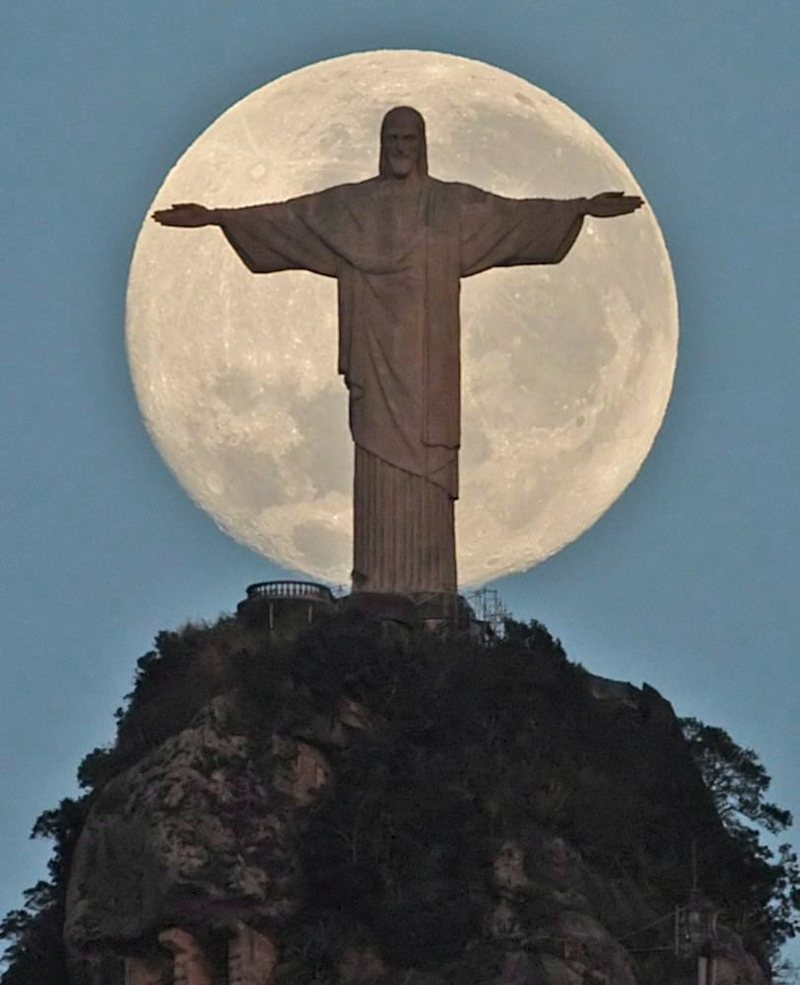
Twice, in 1980 and 1990, major repairs were carried out on the statue. Also, preventative work was carried out several times. In 2008, the statue was struck by lightning and damaged slightly. Work to restore the outer layer on the fingers and head of the statue, as well as install new lightning rods, began in 2010.
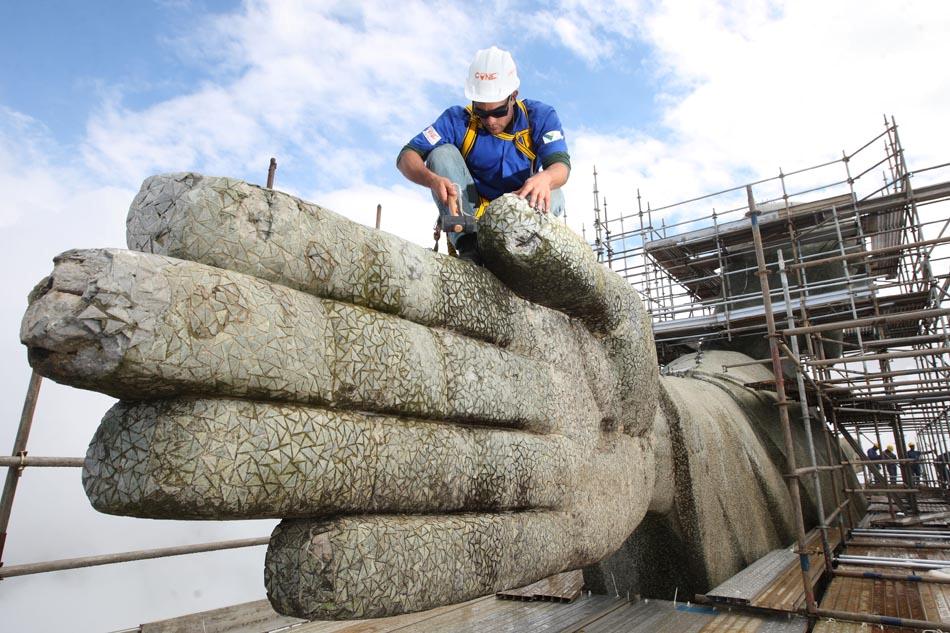
It was then that the statue of Christ the Savior was subjected to the first and only act of vandalism in its entire history. Someone climbed onto the scaffolding and painted pictures and inscriptions on the face of Christ.
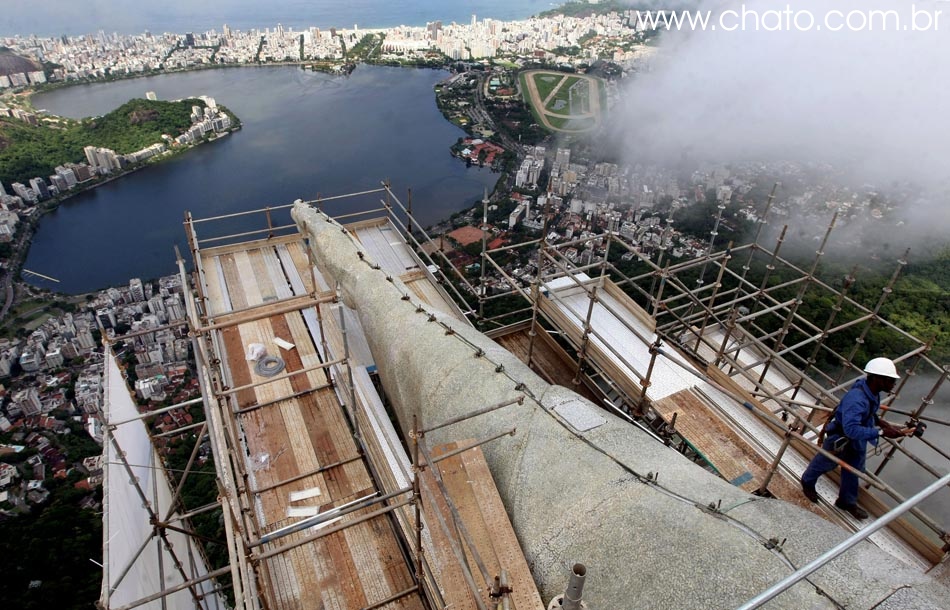
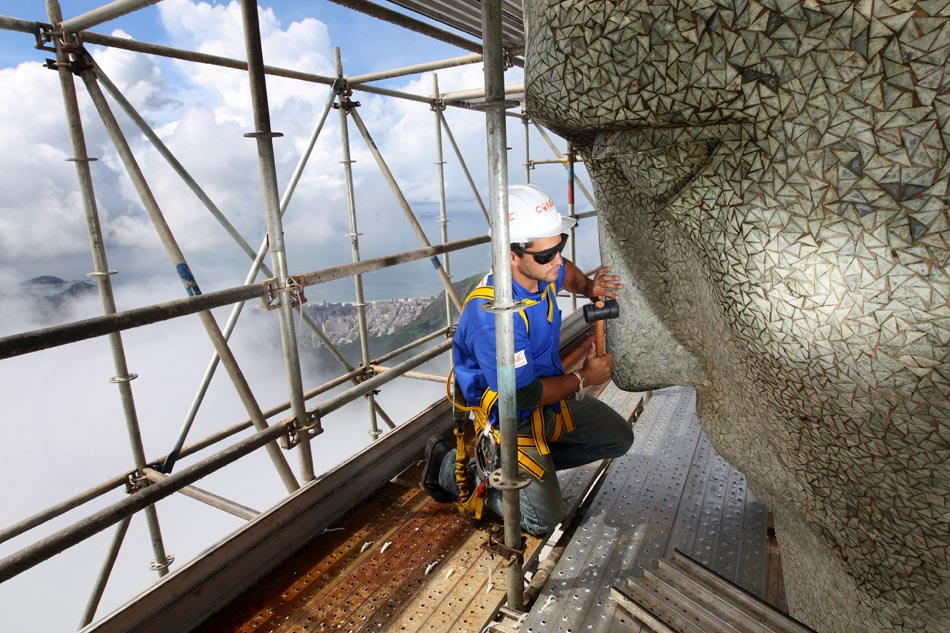


Every year, about 1.8 million tourists will climb to the foot of the monument. Therefore, when the new seven wonders of the world were named in 2007, the statue of Christ the Savior was included in their list.
![]()
Christ spread his arms over the huge city, as if blessing the millions of people living in it. Far below are houses, streets with colorful spots of cars, a long yellow strip stretching along the bay, and on the other side, bordered by green palm trees, is the famous multi-kilometer Copacabana beach. On the other hand of Christ you can see the no less famous bowl of the Maracana stadium", which was glorified by the Brazilian football wizards, five-time world champions, the international airport, and beyond the surface of the bay, on the other side, silhouettes of distant mountains are visible in the haze of fog.
Here, standing at the feet of Christ, you understand what an amazingly beautiful place the Portuguese conquistadors who foundedXVIcentury on the shores of Guanabara Bay fort, which very quickly became the city of Rio de Janeiro and the capital of the Viceroyalty of Brazil, one of the colonies of Portugal.
Only in 1822 did Brazil become an independent state, called first the Brazilian Empire, and from 1889 the Republic of Brazil. The capital of the state is Rio de Janeiro continued to be until 1960, when it lost this honor to the new city of Brasilia, but remained one of the most beautiful cities on Earth. No wonder the Brazilians themselves say about him this way: “God created the world in six days, and on the seventh he created Rio de Janeiro».
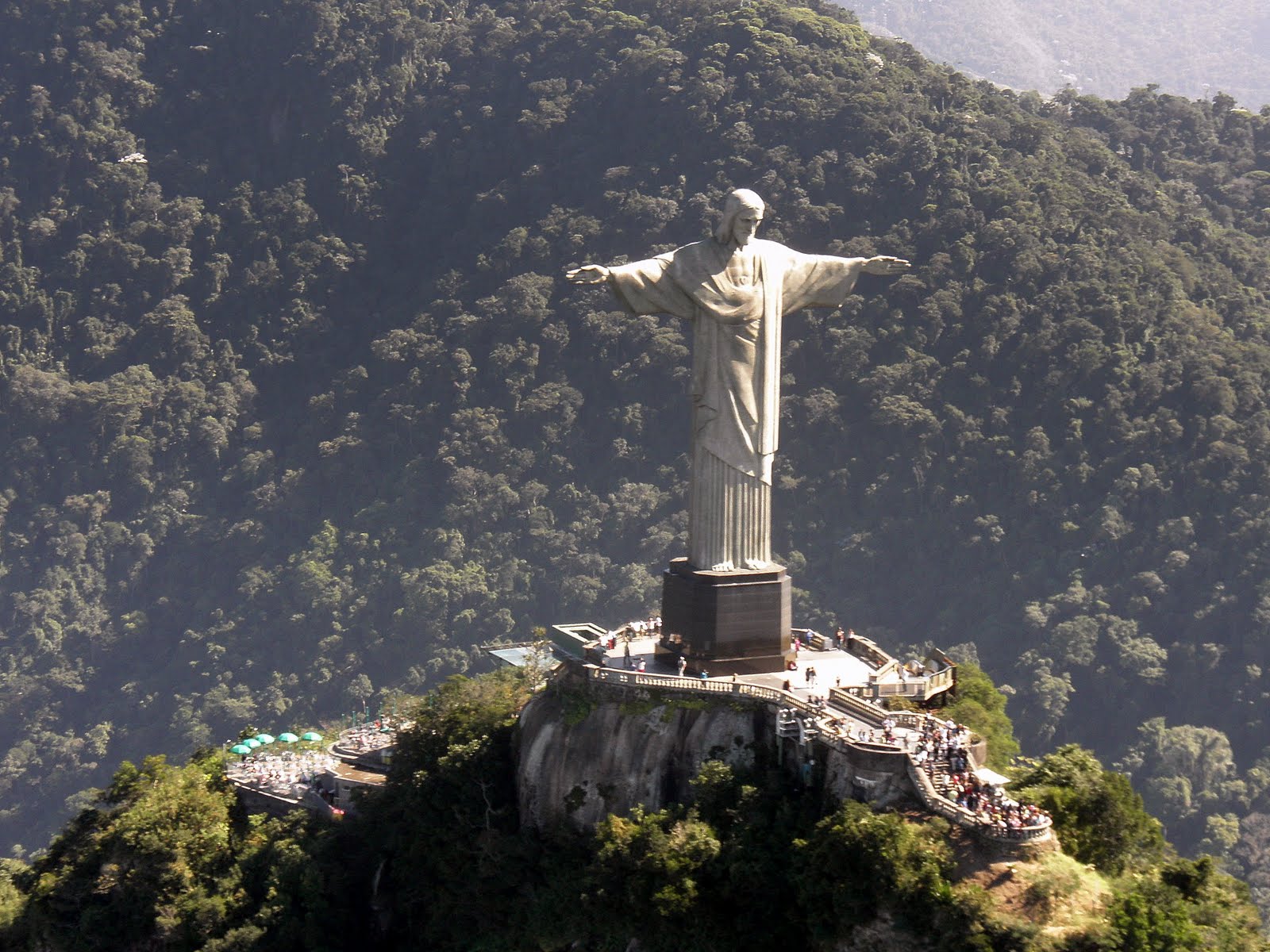
To be fair, it must be said that there are other similar majestic statues of Christ on Earth. In Italy, a huge stone Savior rises above the city of Maratea. In the Dominican Republic, on the island of Haiti - above the city Puerto Plata. But in Rio de Janeiro he is the most majestic and stands tallest...


![]()
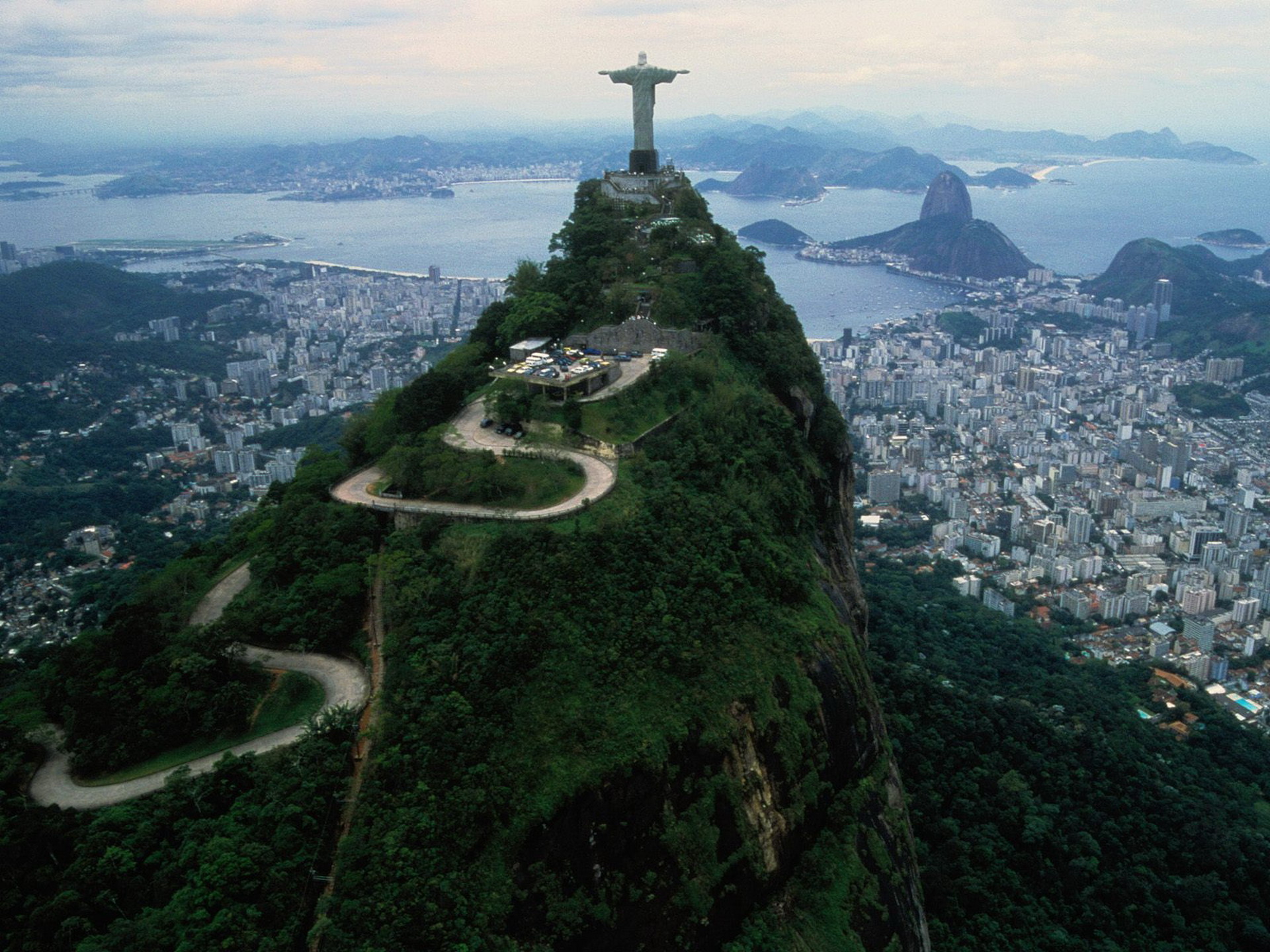

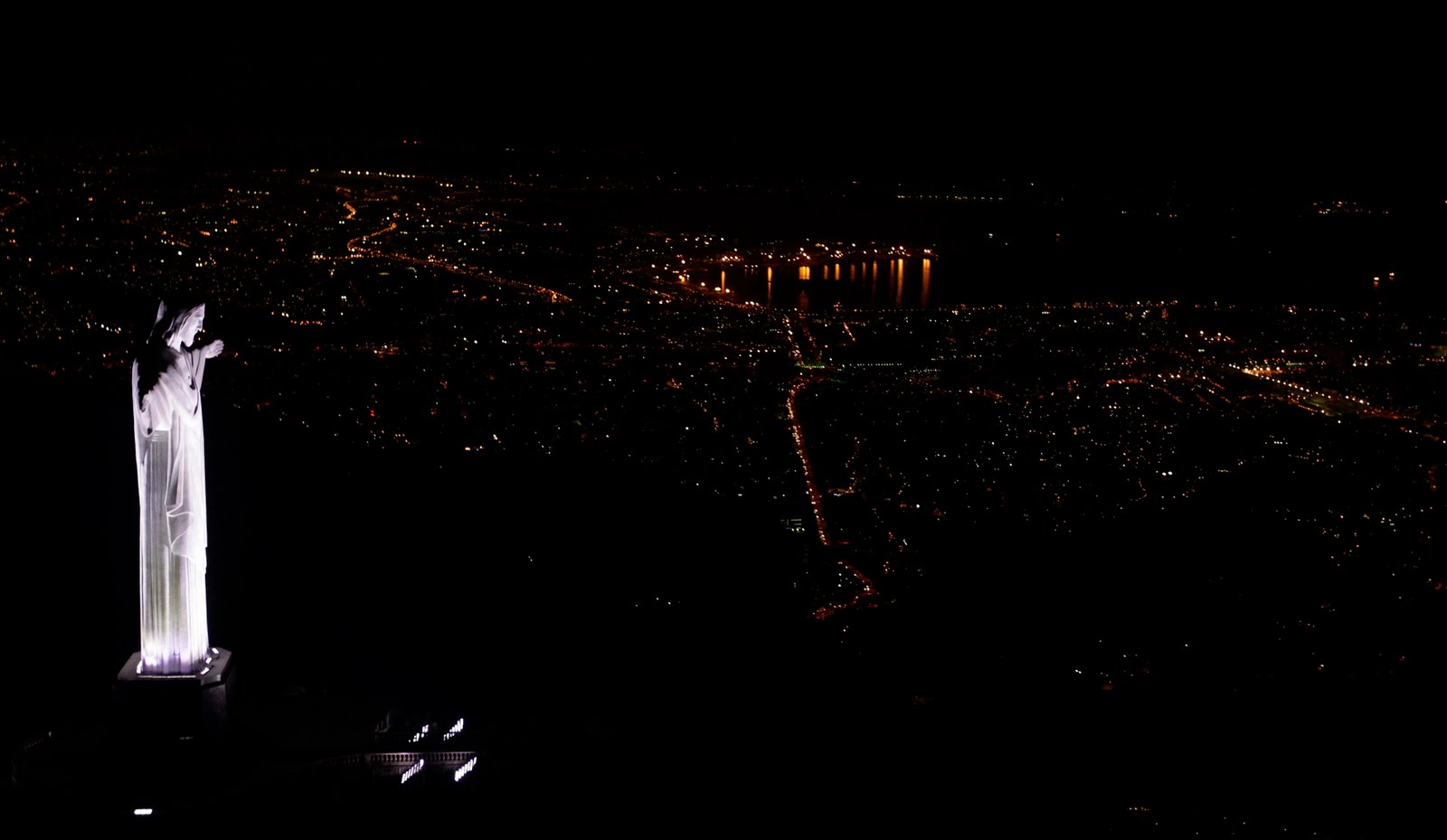
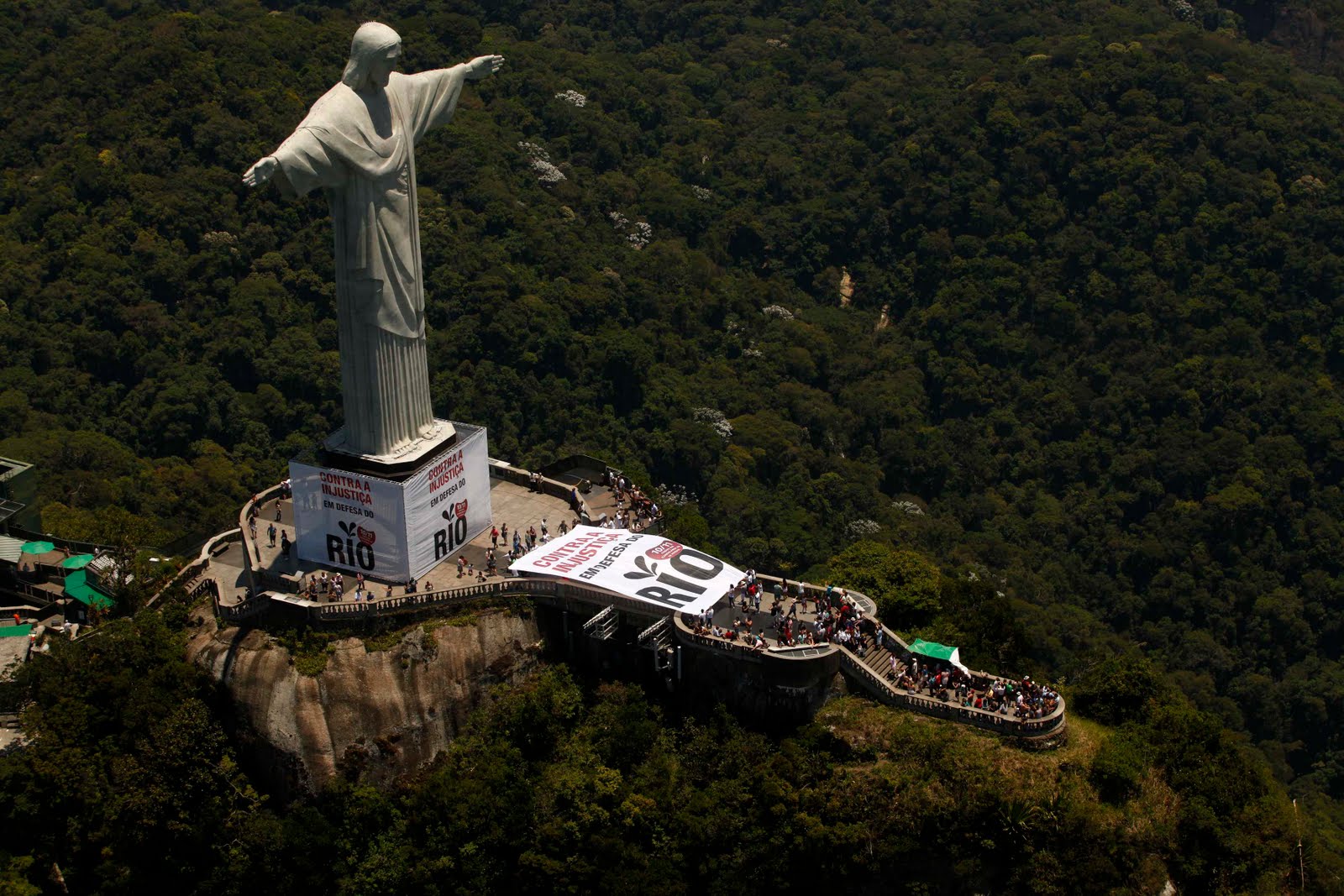

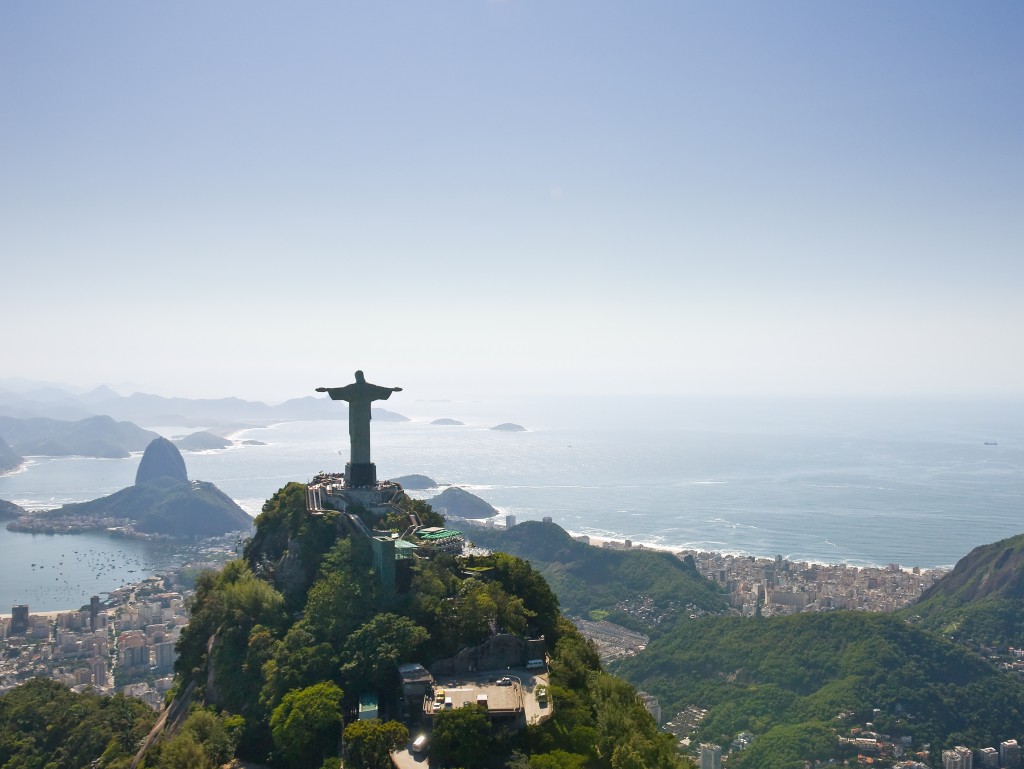

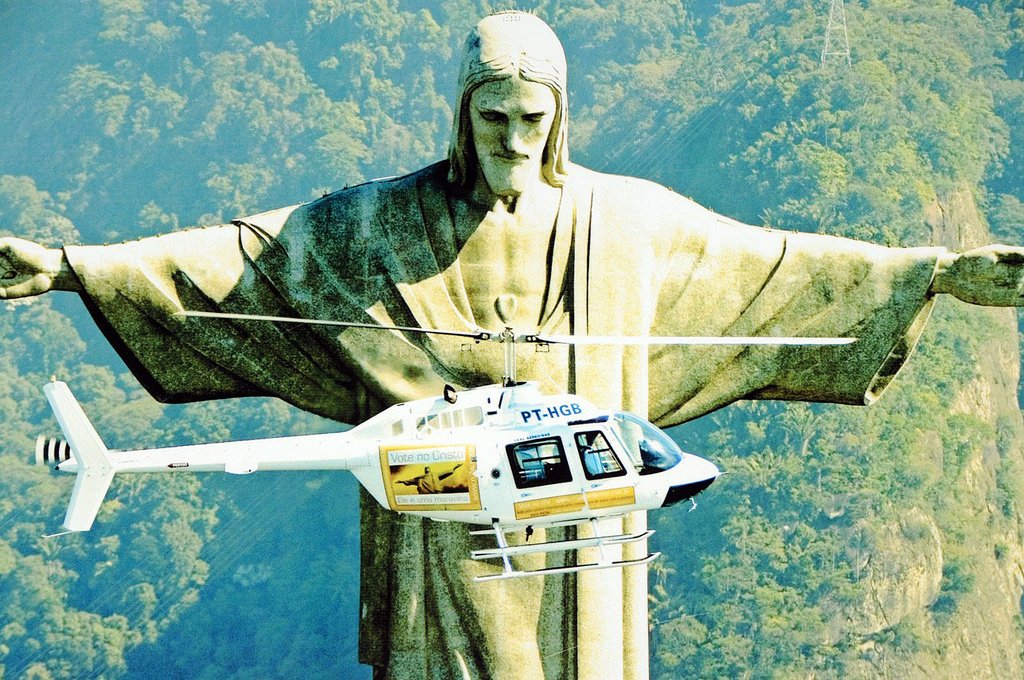
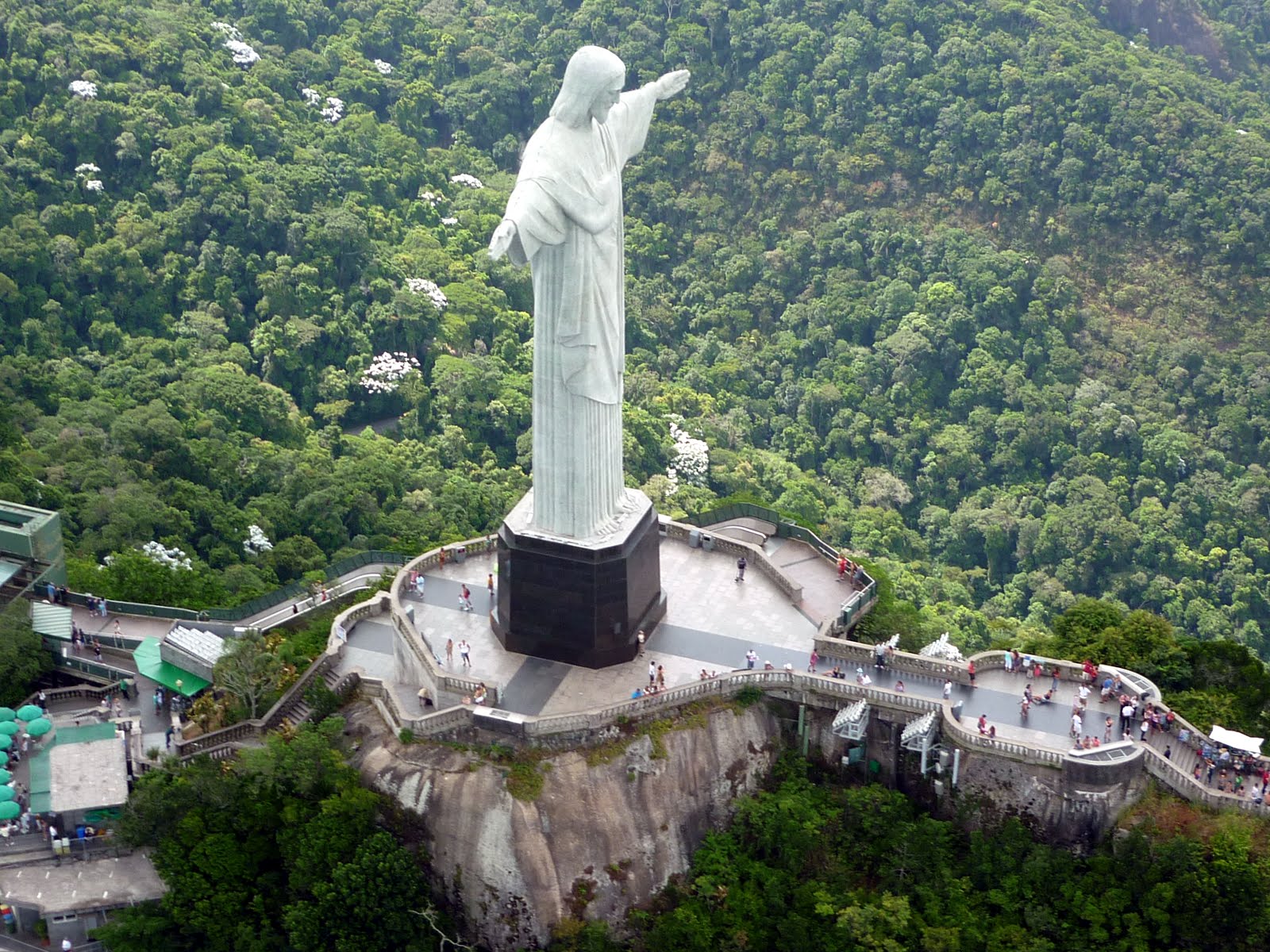

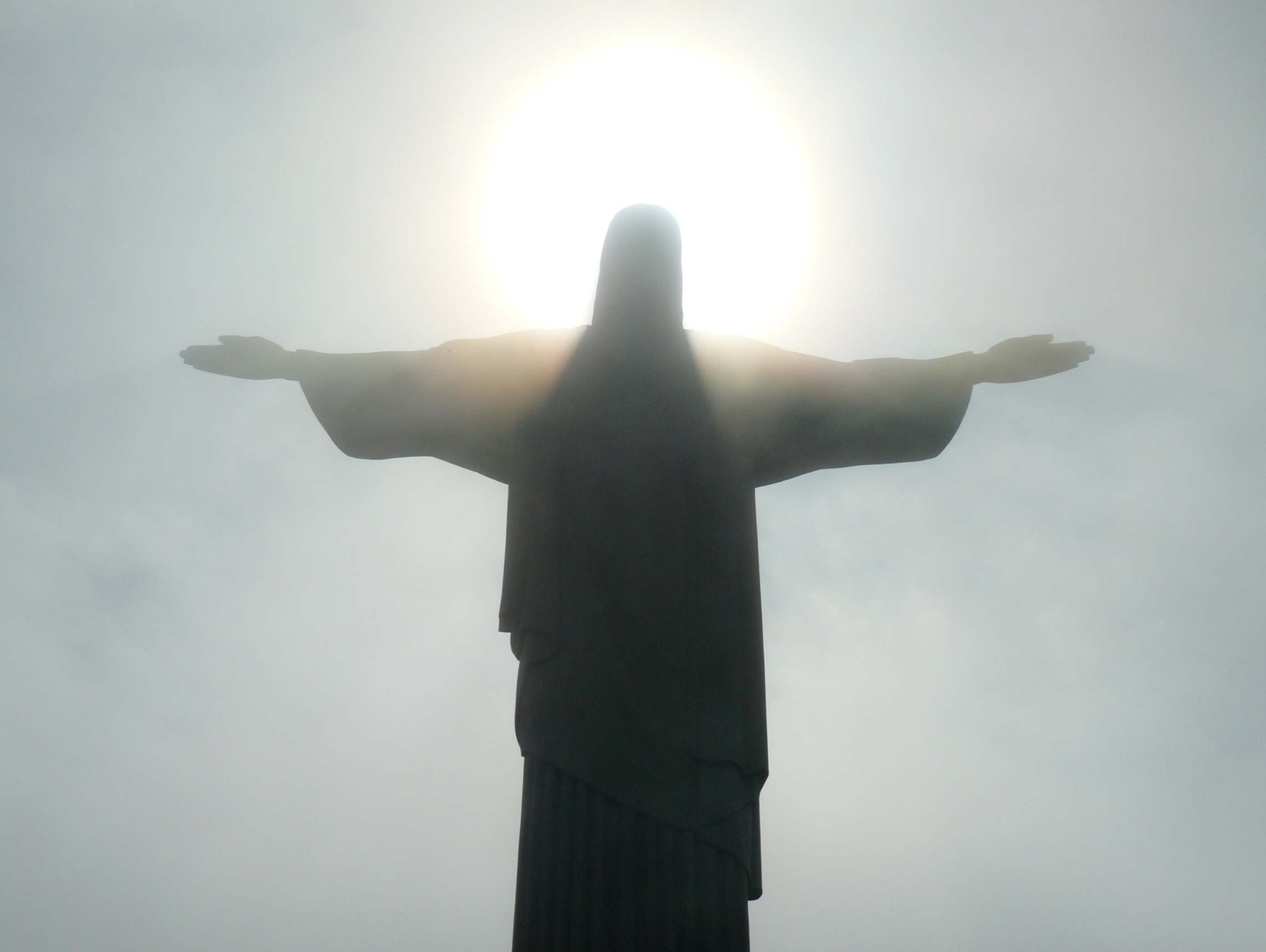
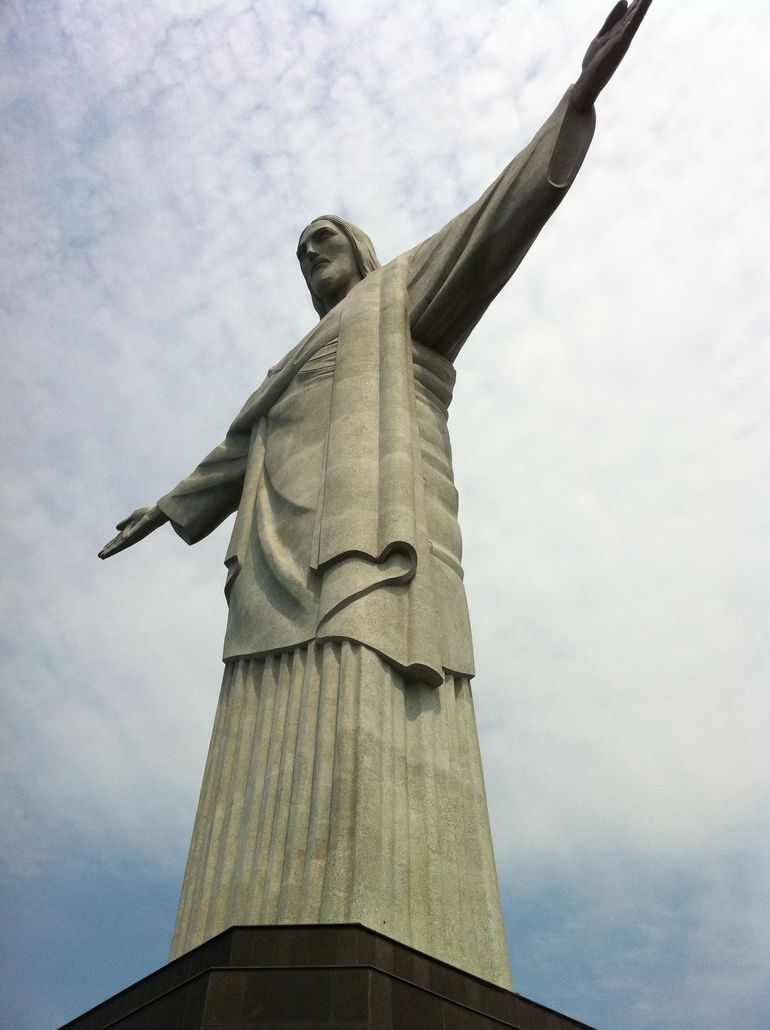

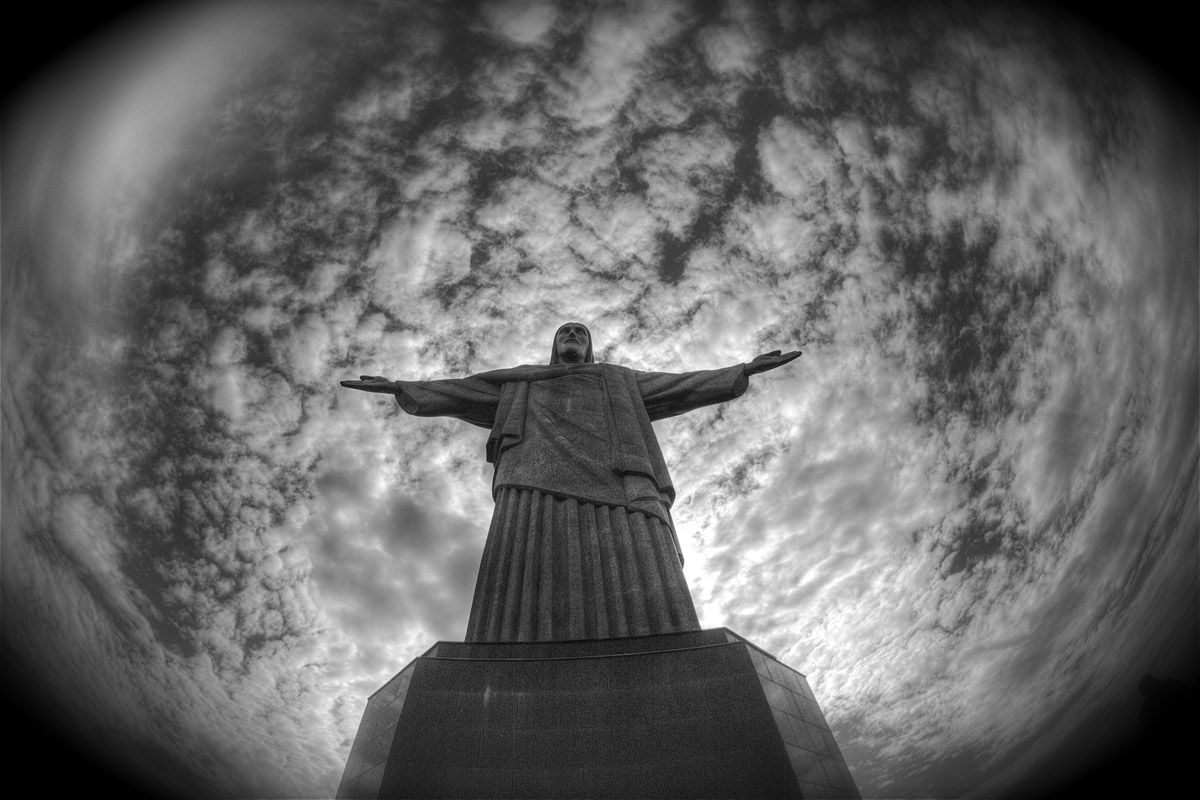
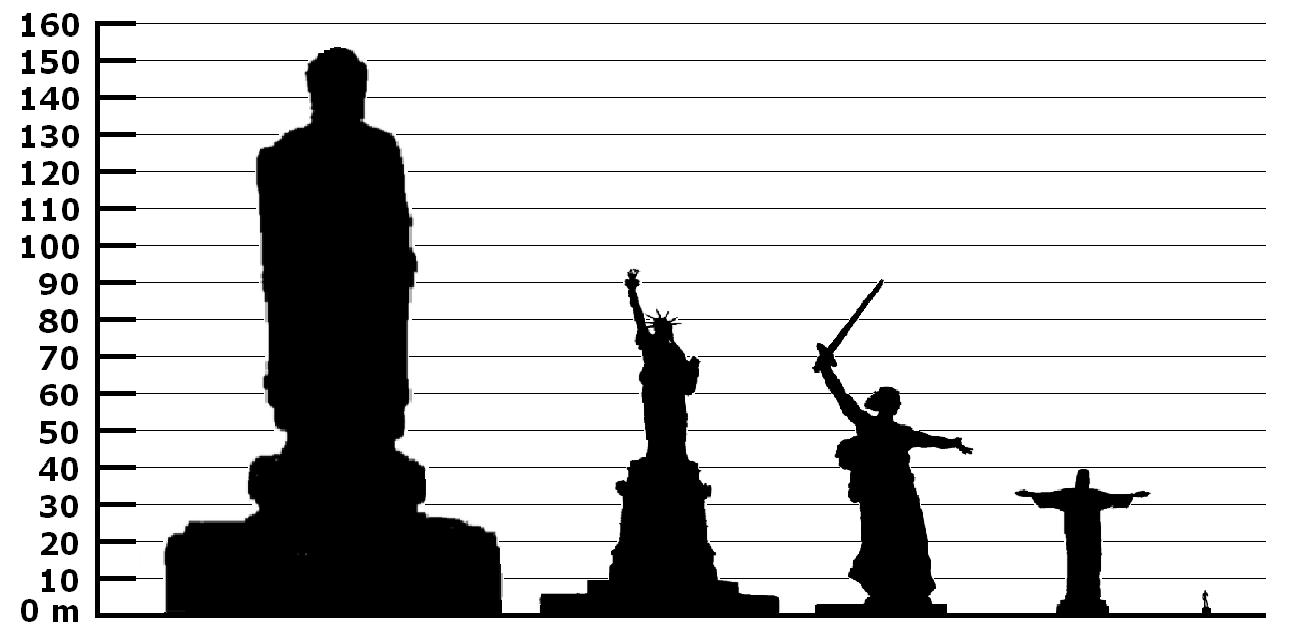
About the biggest statue I
sources
http://www.airpano.ru
http://ria.ru/spravka
http://geographyofrussia.ru
http://grandstroy.blogspot.ru/
Look at which ones we've already examined. The original article is on the website InfoGlaz.rf Link to the article from which this copy was made -
In Brazil, on the top of Mount Corcovado stands one of the Seven New Wonders of the World - the statue of Jesus Christ in Rio de Janeiro. From the observation deck at the feet of the statue, made in the art deco style, a panorama of the city of ten million with its sights and beaches opens up. The laconic figure of Christ the Savior (Cristo Redentor) in the form of a protective cross ranks fifth in size among a number of similar monuments located around the world. This monument is known as a religious and cultural symbol of Brazil.
Arm span and head tilt
The outstretched arms (span 28 m) of Jesus seem to be striving to embrace the whole world, simultaneously blessing and patronizing. The height of the monument is about 40 m, of which 8 m is on the marble pedestal-base, with a chapel located inside. The Colossus of Jesus is made of reinforced concrete, covered with a mosaic of triangular tiles of light soapstone (soapstone).
The head of the statue is bowed towards the people, and the figure opens its arms in the direction of the sunrise. Contrary to the prevailing opinion of tourists that the monument is visible from anywhere in Rio de Janeiro, the figure even at the foot of the mountain seems small. At night, the statue is illuminated and is no less attractive for filming. It is noteworthy that, as the highest point in the area, the statue of Christ in Rio receives about four lightning strikes per year, and the lightning rods built into the head and arms undergo periodic maintenance.
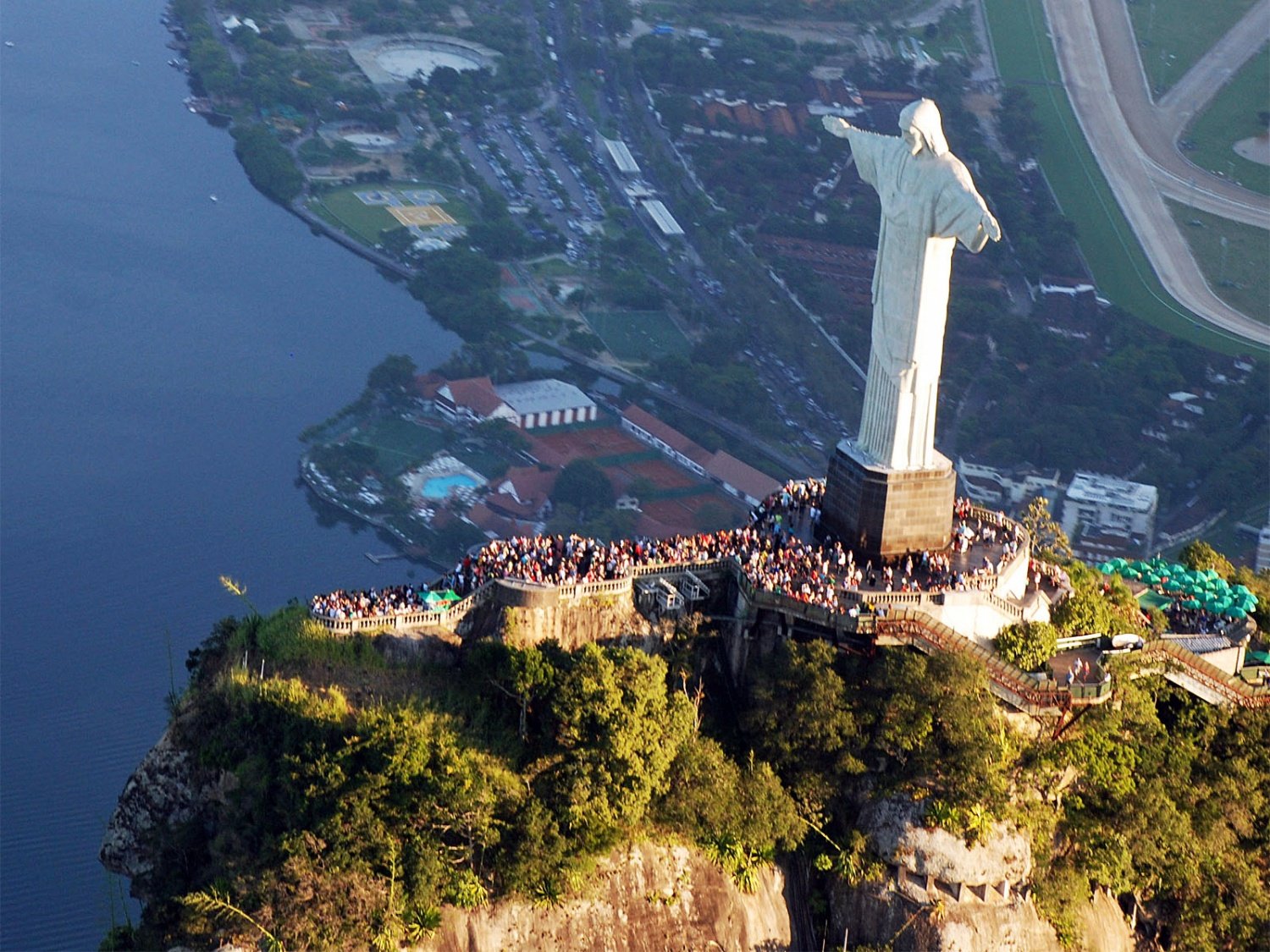


Neighborhood
The view of the landscape from the observation deck at the feet of the statue is most impressive at sunrise and sunset, and at this time there are a minimum number of tourists. It should be noted that the panorama of the surrounding area is clearly visible in clear July weather - at other times of the year there is often fog. In the picturesque area of Tijuca National Park there is a statue of Christ the Redeemer - Rio de Janeiro is the owner of the world's largest forest area (39.51 km 2), located within the city (1260 km 2).
The iconic Corcovado mountain rises 710 m above sea level, but in the west of the park there is a higher granite massif - Pedra da Gavea , 842 m). Rio is a major port on the Atlantic coast, in the east of which the entrance to Guanabara Bay is preceded by Sugar Loaf Mountain (Pan di Azucar, 396 m). In the language of the local Tupi aborigines, Pan di Asucar means “guardian of the bay” - you can get to the top by cable car.
In the western zone there is the longest beach in the city, 18 km long, Barra di Tijuca - a year-round paradise for surfers. Of particular note is the Rodrigo de Freitas Lagoon, which has access to the Atlantic Ocean through a canal and is not suitable for swimming, but is used for international rowing competitions.
The sports spirit of the Brazilians is noticeable from the top of Mount Corcovado across the “bowl” of the largest football stadium, the Maracanã, located in the northern part of Rio de Janeiro. Another passion of the locals is expressed in the huge venue in the city center - the Sambadromo Marques de Sapucai. This is a kind of stage, a continuation of the main street and arena for the world famous Carnival, the fun and bright colors of which are silently watched by the statue of Christ in Rio de Janeiro every year.

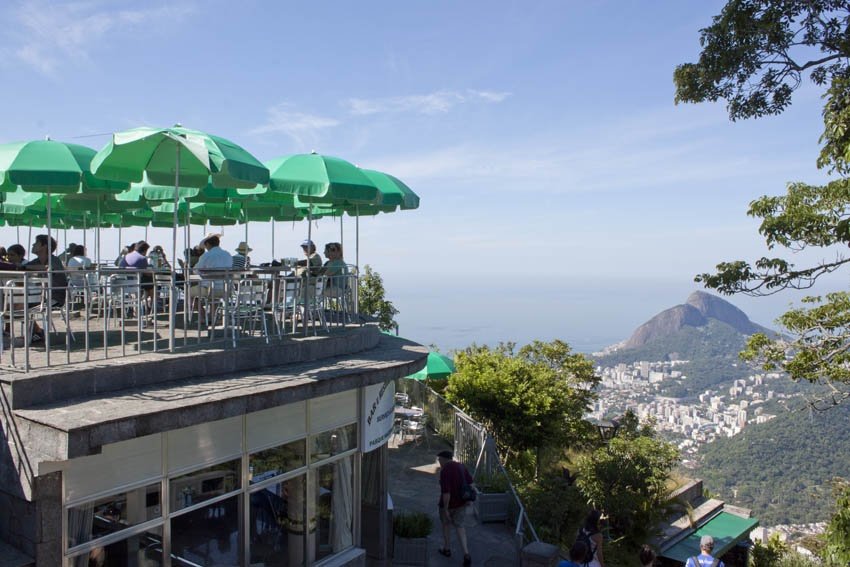
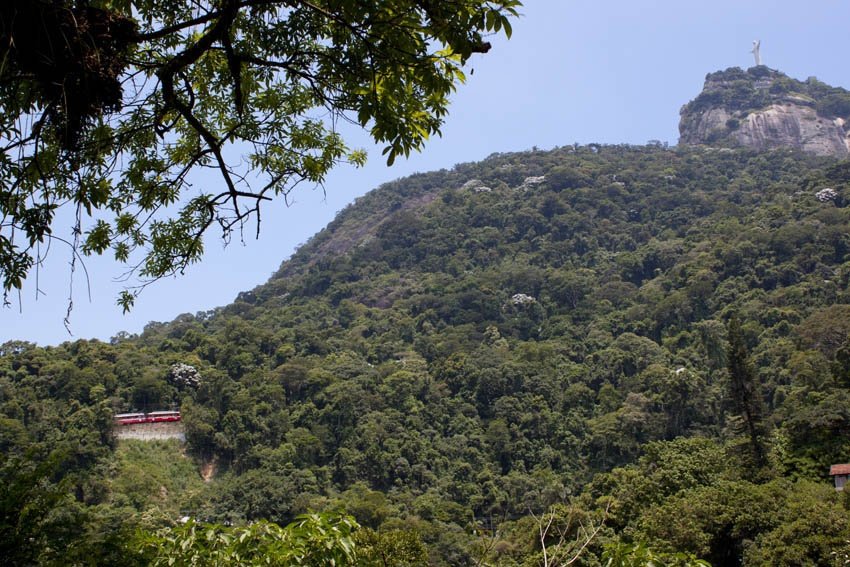
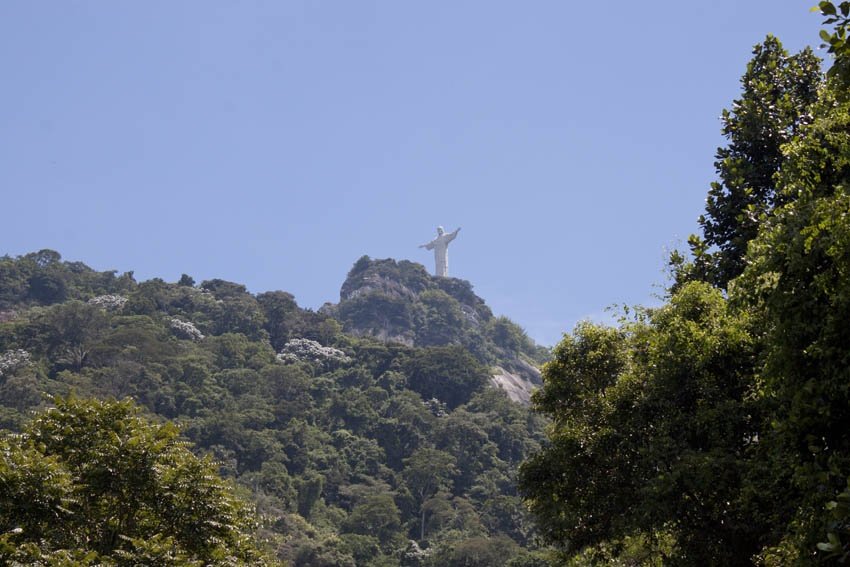
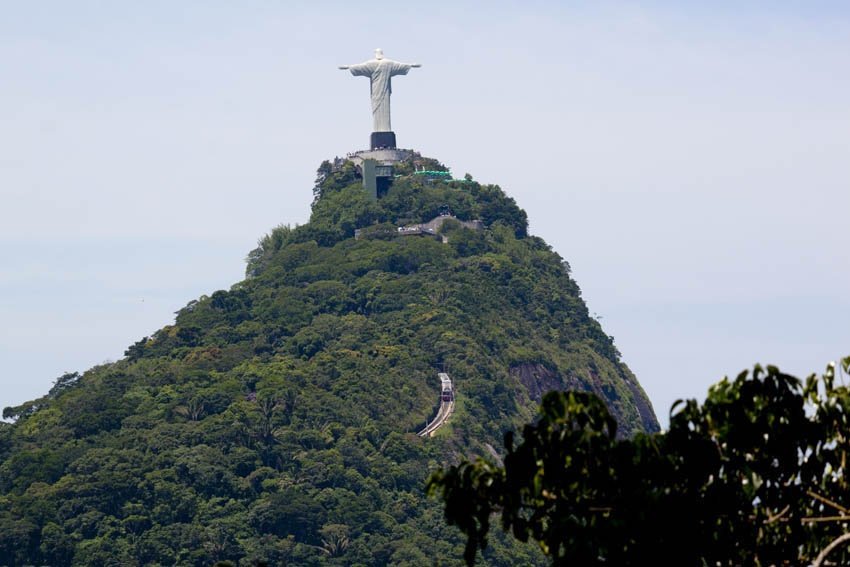
History of creation
Thanks to the beautiful panoramic view opening from the top of the mountain, a local Catholic priest first came up with the idea of installing a monument in the mid-1850s, which was effectively continued only 70 years later. The monument, which took about 9 years to create, was inaugurated in October 1931 and since then has attracted about two million tourists every year. The details of the monument were made in France, and after delivery to Brazil, they climbed to the top of the mountain by railway, built at the end of the 19th century (1885).
![]()
The monument is periodically restored. Below is a fascinating video filmed by the workers.
How to get there
The railway (3800 m) is still functioning and regularly delivers tourists from the Cosme Velho metro station every 30 minutes to the foot of the monument - the final point is located 40 m from the statue. Overcoming the steep climb to the top of the mountain, two electric trains run, delivering 360 passengers per hour to Jesus.

There is a road through the national park, which is best taken by public transport - taxis are allowed up to a certain point. Minibuses run regularly along the route from the square near the Largo do Machado metro station, where tickets are sold at the ticket office. The most resilient tourists travel by bicycle, but according to reviews, it is wisest to hire a personal guide with a car.
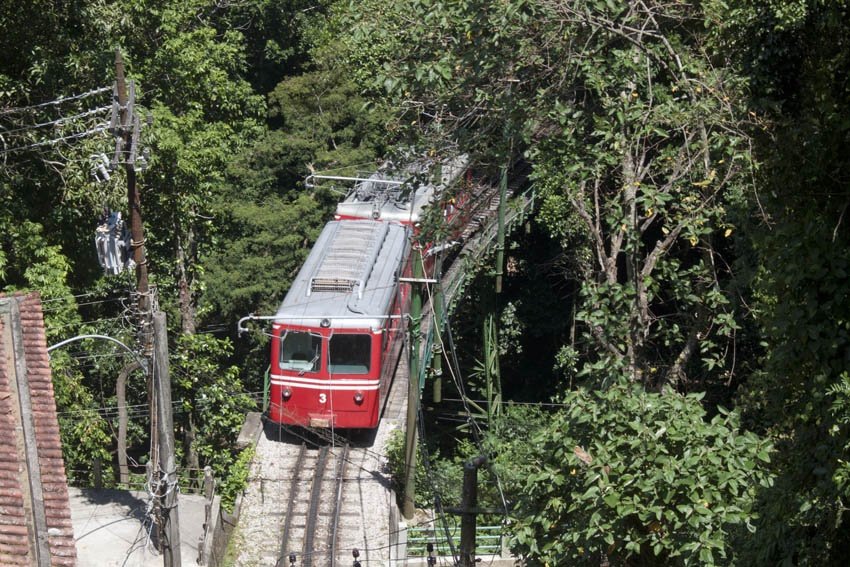

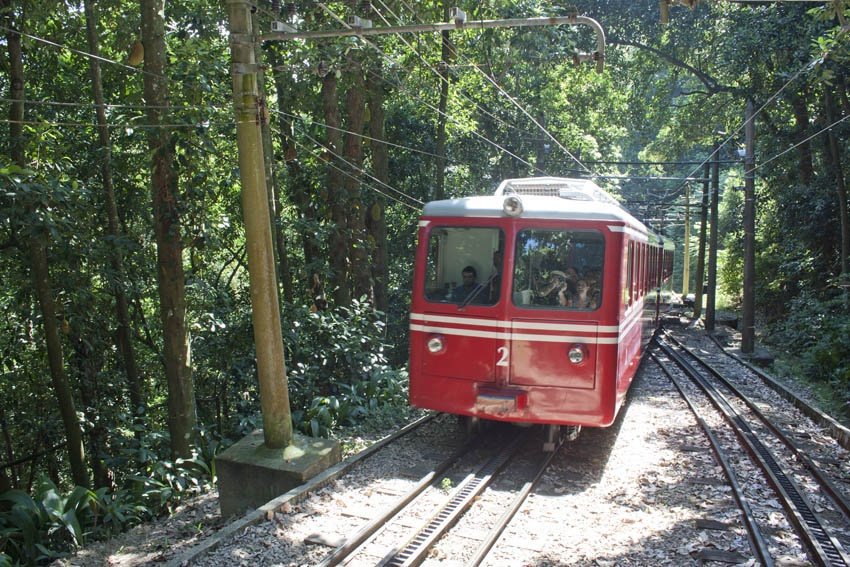
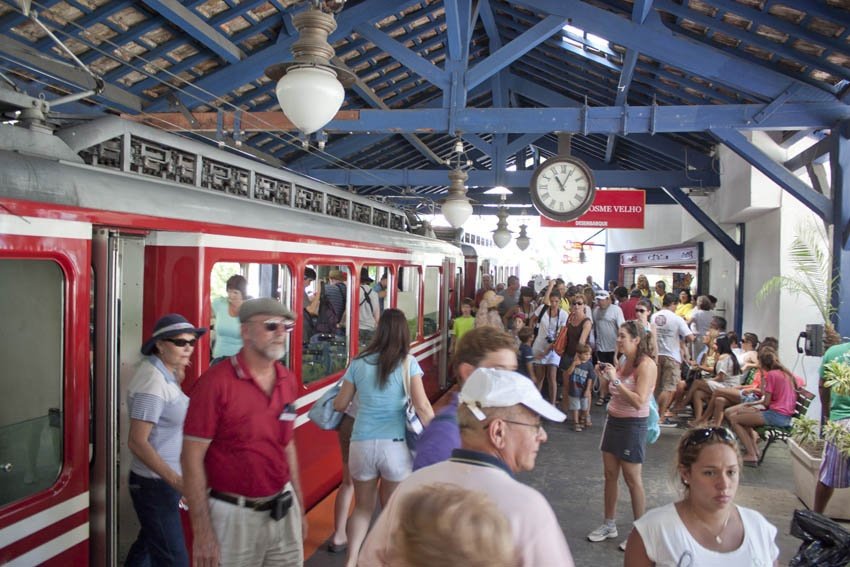
From the place where passengers disembark from the transport, you have to walk 220 steps along the winding Karakol staircase, nicknamed the “snail”. The statue of Jesus Christ in Rio has been carefully equipped by local authorities with elevators and escalators. Helicopter excursions starting from the Sugar Loaf monolith leave an unforgettable impression on tourists. The cost of a few minutes of flight is $100 per person.
Benefits and restrictions
Payment for admission to the Monument of the Savior for 2015 by paying for a trip on an electric train in both directions:
- for persons over 60 years old - $22;
- for other categories of adults it will cost $56–68 depending on the season and weekdays;
- Children under 5 years old travel free on a parent's lap, for 6–11 years old the cost is $44.
An important fact is the provision of 50% discounts on student tickets.
Due to the sacredness of the monument, persons with pets and in revealing clothing (swimsuits, T-shirts, shorts) are not allowed to visit the top of Mount Corcovado. Professional photography and video filming should be carried out only with the permission of the national park administration. If you plan to return to the city on foot along forest paths, it is vitally important to take care of a local guide. In addition to lush natural beauty and impressive landscapes, Rio de Janeiro has many architectural monuments located in the historical center of the city.
